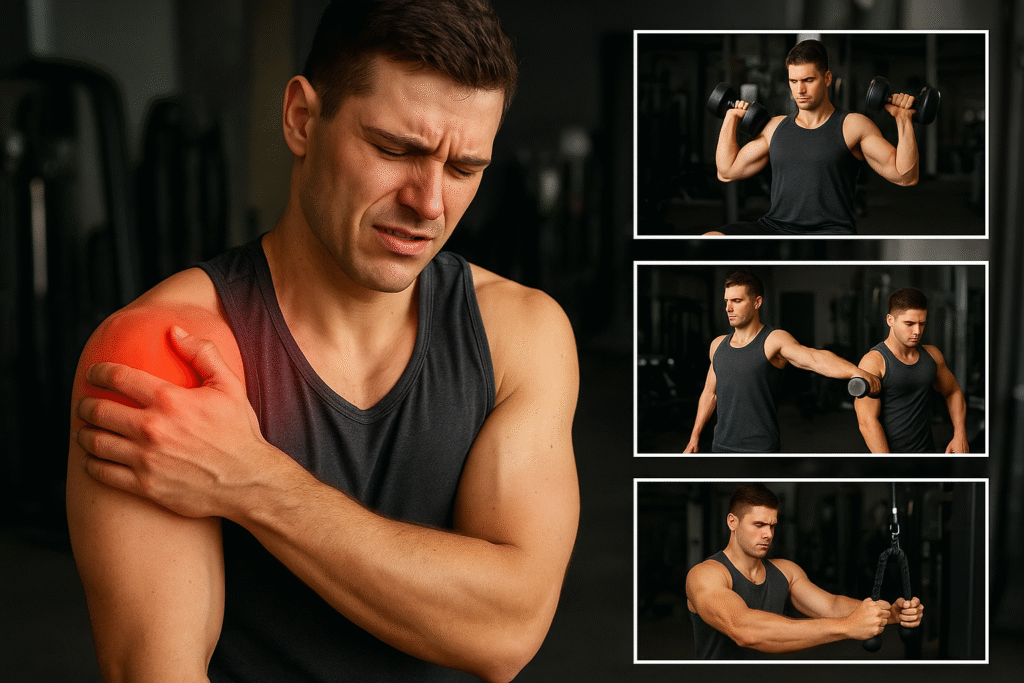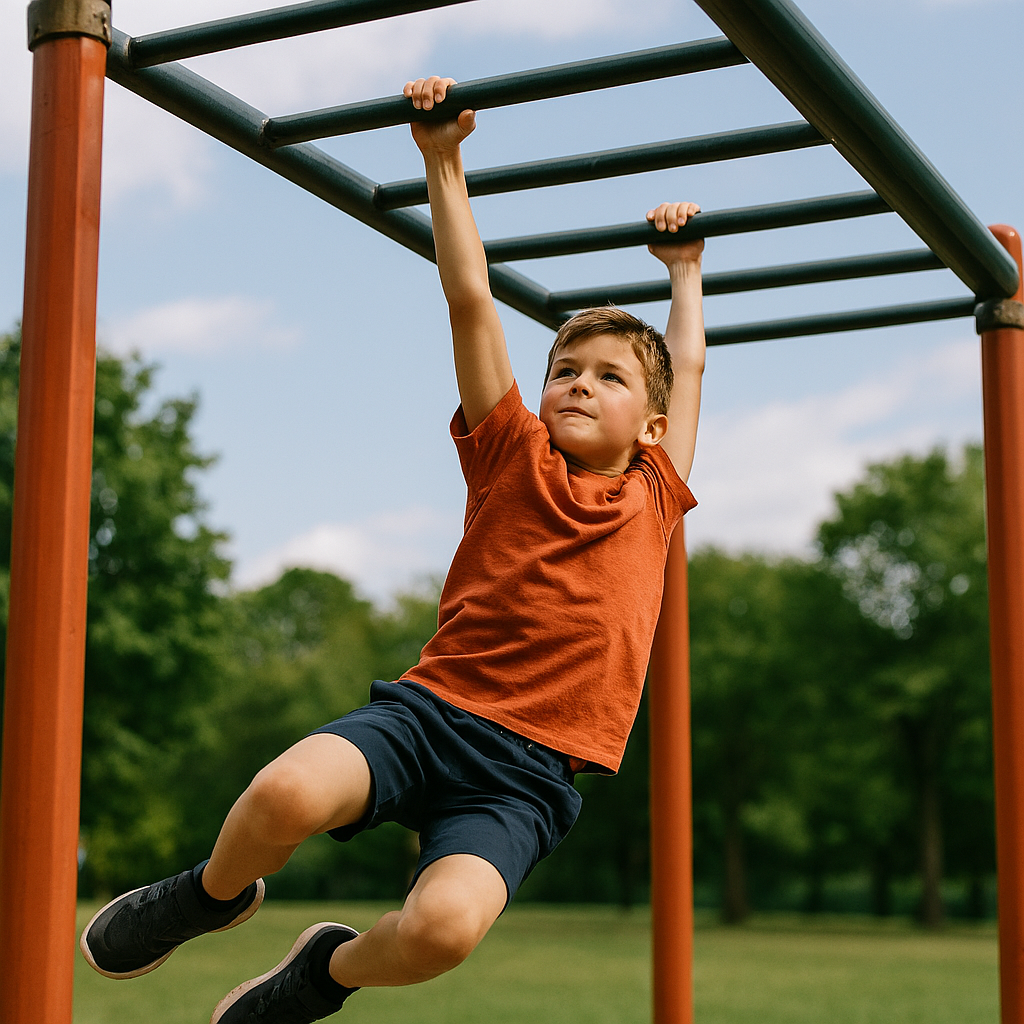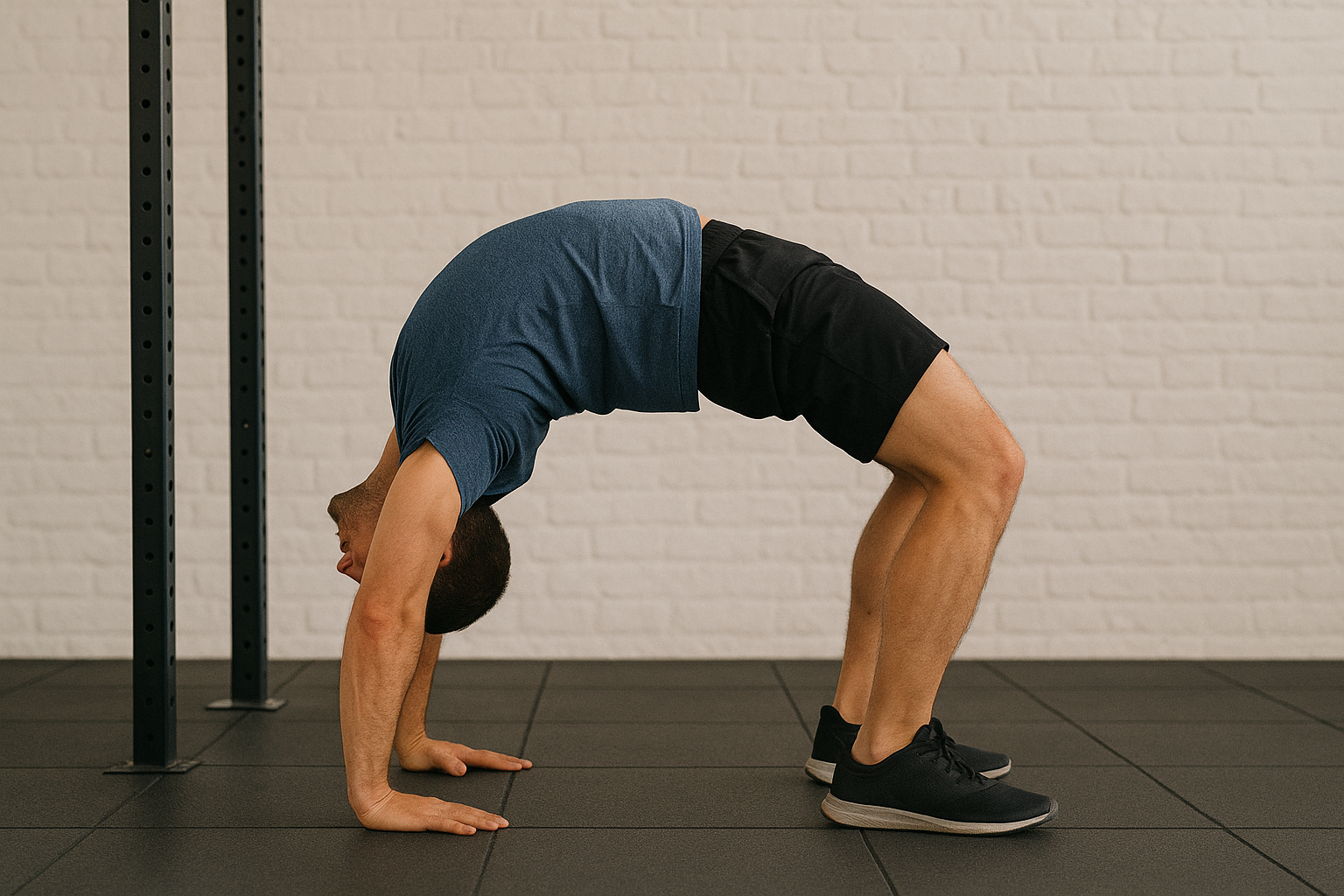
Most people in the gym know the rule of thumb: “Pull as much as you push” to keep your shoulders healthy. The idea is that your back work should “balance out” your pressing.
That’s not wrong. But it’s nowhere near the full picture. The shoulder is the most mobile joint in the body, and designed to do so much more than fit into these few rigid movement patterns.
The reality?
Most lifters only train 4 patterns consistently:
- Horizontal push (bench press, push-ups)
- Horizontal pull (rows)
- Vertical push (overhead press)
- Vertical pull (pull-ups/lat pulldown)
- Maybe they sprinkle in some “rotator cuff” or “mobility” drills if things start hurting.
This can be fine and you may get what you want from it – but it will cause problems
The above approach is tried and tested and sticking to these basics can absolutely deliver all the aesthetic/strength goals that most have. I am convinced however, that this typical gym floor approach encourages shoulder dysfunction. You cannot train such a multifaceted joint in such a linear way for a sustained period of time and not expect inhibitions to natural movement. And a little rotator cuff/mobility work is not going to fill the hole. For many reading this, again, crack on, do what will get you results and give you enjoyment doing so – I am not disputing the bread and butter of gaining muscle or strength. If you want to go gym with your friends in college, get a pump, do it, because for many that’s what it’s all about. I started lifting weights that way, and it was a real good time in my life. But you will run into problems, and will lose athleticism and function as you progress down your journey, unless you embrace the doo da of a more holistic approach to training, or at least be aware of it.
For those who don’t already know, my approach to weight training is still heavy and focuses on compound lifts. I am not anti weight training, and not against many of the common weight training exercises. With the approach I take you will still make significant strength and muscle gains, and build an impressive physique. I simply feel traditional weight training provides an ‘incomplete’ menu of exercises, and thinks about movement too linearly. Yes- do heavy weight training, gain muscle and strength, but retain a focus on basic human movements, and move your joints in every plane of motion.
Something was lost along the way
You MUST completely lose that push pull mindset to upper body training.
As mentioned above, it seems logical to me that training the body in very rigid, limited movements, will inevitably hamper natural function. And this plays out – ask any gym goer who has followed the traditional strength/muscle building path and they will likely tell you of: poor flexibility, shoulder/other pain… you could make the generalisation that gym goers who lift weights for a considerable period of time and see muscle/strength gains, on the whole worsen their shoulder health/function. That shouldn’t be the case.
Yes, a traditional weight training programme may be more “optimal” for gaining strength/muscle, but it will come at a cost. Surely a healthy and functioning body should be the foundation from which your training goals are achieved? And to reiterate – I advocate for heavy weight training and make strength gains a priority – I am not anti bench press.
Weight training can be a hobby, and that’s fine. It can be the little bit of time you dedicate in your busy life, towards your health, and that’s fine. But as a rule, it a should be a supplement to the more natural forms of activity that should already be routine for humans to do. Walk, run, swim, monkeybars/hang, throw, carry, fight, and use weight training to improve athletic output/resilience for those activities. You would build an impressive physique just training for GPP (general physical preparedness).
Your shoulders should be pain free, and there are movements we as humans should be able to do.
The ability to do natural ‘sh*t‘

Monkey bars: humans should have the ability to do this, pain free, and to hang / swing from sh*t – it is how our shoulders evolved. Most can do it, but their shoulders won’t like it, due to modern lifestyle and exacerbated by weight training. We should also be able to throw, punch, carry things (farmers/suitcase carries) and have general pain free, fluid movement in the shoulder (arguably swim too). I would encourage everyone to do some of this natural sh*t alongside their gym work, if only to grease the groove and keep these movements natural. If there are monkey bars at your local park, try make them a weekly thing…. precede with caution as detailed below. You may find this article interesting.
The approach
Essentially, I see the bench press as a good exercise, but no more important than say, the back bridge (gymnast bridge) – which most people would only ever see as a supplementary / optional exercise that you could work on for a bit if you so desire (if they even considered it as an exercise in the first place, which many wouldn’t). It should be given equal importance to your bench.
There is an unwritten sense that there are strength exercises, gymnastics exercises, calisthenics exercises, kettlebell exercises eg… the point being that different training ‘modalities’ are treated separately. An exercise should be considered objectively, regardless of training style.
Many now know that you shouldn’t skip a muscle group- calves, rear delts etc. Well, you also shouldn’t neglect planes of movement. Think back to the start of this article – most train upper body as horizontal push pull, vertical push pull, and add in some rotator cuff/mobility for good measure. What about shoulder extension; german hang/skin the cat… most would have never been aware of this plane of movement, and certainly not given it dedicated training. The same can be said for thoracic extension – some may have done a butchers block stretch, but very few treat it as a major movement pattern in the same light as a horizontal push.
Training should be designed to hit all planes of movement, as well as all muscles.
You should also keep your eye on the big picture – training one strict movement pattern with heavy weight, on repeat, is not natural. Repetitive training of a heavy horizontal push movement for example, may well cause shoulder irritation regardless of a well balanced programme. Listen to your body. Yes, to improve strength/hypertrophy as will be the goal of the exercise, you want to be consistent over a period of time with the exercise, but do not lose sight of the big picture in that it is not natural as repeated stress for your shoulder. This is why I believe everyone would benefit from not always fitting training in a box so to speak. Your focus can be strength/muscle gain, but there is only long term benefit to come of giving your body a bit of TLC and treating it as it is designed to be treated. It is ok to have deloads and variations in training where you focus on rest and natural movement. Training should be flexible and appropriate for your/an individuals current circumstances.
Precede with caution
This is not a definitive guide for sorting shoulder pain, no such thing exists. Pain is also more complex than damaged tissue = pain. The advice provided is general and I believe is the best way a person should view upper body training. However, regardless of an individual’s training background/circumstances, caution must be taken. Any change in training can irritate your body – that does not mean the changes are bad, it just indicates you should listen to your body. Introducing a vastly new style of training, and training movement types that haven’t been trained before (e.g. the back bridge, which works the shoulder/wrist to the extremes of it’s range of motion), can again cause irritation, and again, this does not mean these movements are to be avoided and not beneficial in the long term. Caution must be taken, and an individual should ensure they listen to their body to prevent worsening of symptoms. Teething issues are to be expected. Each individual would also benefit from a tailored training plan as each individual would react differently to training, and have different tolerances to exercises, e.g. some may be able to bench press year round without issue, others may find they need to take a more flexible approach. Each individual will find training nuances that suit them. This fitness approach is to co-align with your specific training goals throughout the course of your training life; it is not a short term plan, but a lifelong shift in mindset.
Don’t try and do everything in one workout, too much of a good thing can still irritate the shoulders!
That’s why shoulder pain is one of the most common issues among regular gym-goers. It’s not because the bench press is “bad” or pull-ups are “dangerous.” It’s because your training menu is incomplete.
Common Advice
A bit of research into the shoulder pain you may be experiencing, and you may be advised to avoid placing your shoulder into too much internal rotation. This advice will often help; overdoing/overstressing your shoulder in internal rotation is indeed what causes a lot of shoulder pain. I have avoided dips for most of the years I have been training, for this very reason. But this is a short term fix to relieve symptoms. The best long term approach should be restoring natural movement, and if progressing in the typical ‘push’ ‘pull’ movements, progressing with all other shoulder movements and giving your shoulder the all round training it needs to thrive. So short term solutions and long term solutions can look very different and both be appropriate for the needs at hand. Don’t rely on the short term solution forever.
Quick fixes: foam rolling, massage guns, scraping, myofascial work… may feel some benefit. But the key to long term lasting changes isn’t hiding from a range of motion, or massage therapy, it is carefully loading that exact range slowly, consistently and progressively until the tissue learns to handle it. To build strength and resilience in that area/range of movement. Shoulder pain from dips does not = dips are bad for your shoulders. It means your shoulders need to develop a tolerance to them, and that is not black and white, linear or straight forward, but comes from long term gradual pain free exposure and progression, and not viewing pain = damage, and pain = something to avoid. The human body is robust.
What to do

Treat the shoulder like it was designed to move — not like a hinge that only presses and rows. This means balancing all major planes of movement: not just push and pull, but extension, thoracic work, natural hanging patterns, monkey bars, progressive rotator cuff strength, and more.
The monkey bars should be a staple in every body’s life imo (health permitting). Hanging from a bar too. And if you are progressing with certain movements as a bench press, row, pull up, shoulder press, I feel you should also be giving equal weight to the back bridge, shoulder extension (german hang/skin the cat), handstand, and others. This doesn’t just apply for those looking to becoming more flexible, rehab from injuries, or train in a niche way. Personally I feel this should be the overriding training philosophy in the industry.
To account for the extra exercises, likely pull back on unnecessary volume such as chest flyes/supplementary ‘pump’ exercises. Progressing strength on compound movements, and incorporating a wide, balanced range of movements is the priority. Training sessions don’t need to get longer, cut out what isn’t essential.
I wouldn’t have given anything written in this article a second’s thought when starting out, so fully understand if most are not interested.
The focus
Gain strength and flexibility in the gym – building strength through a full range of motion through every plane of movement. Ideally build training upon a foundation of ‘natural’ movements. Work towards addressing and/or preventing injury, becoming a more all round athlete. Strength and muscle gains will come as a bi-product, weight training will be heavy, just with a rounded approach.
For someone just getting started in the gym, I think they should follow this approach. As a newbie I felt this more ‘holistic’ approach to training was at odds with gaining strength and muscle – it doesn’t have to be. While it may technically be more optimal to gain strength and muscle by following a more traditional approach to weight training, you will still make significant gains this way – with many more benefits and fewer drawbacks than typical weight training. As a newbie I didn’t understand this so I want to hammer the point home – you don’t need a pump to build muscle. The approach I am advocating does focus on heavy lifting and increasing strength. I want people to do this and still maintain normal shoulder function. It is a bit illogical if you think about it – you can move your arms/shoulders in all manner of ways/directions, throw stuff in many different ways.. yet most train for years with a few very strict movements. It is incomplete. Train your body in a more fluid, rounded way.
The big picture
There are many reasons why I exercise, and exercise the way I do. I think humans have to move, it is a natural thing we must do. We are better physically, and mentally, when we do. It is a vice for me, a release and something I do to feel my best. An absolute key reason why I have in a sense developed this style of training is to stay as injury free as I can- both enabling me to do the sports/activities I love, and not have my everyday life hampered by for example, general lower back pain (it shouldn’t be as common as it is – and if you have it it is very likely lifestyle related). I am also increasingly interested in becoming a better athlete, measurably. I started athletics this summer, and for me this gives a further definitive way to see the results of my weight training. Weight training specifically, is for me all things: enjoyment, for physical & mental health, to look better (gain muscle), gain strength (gaining strength is an enjoyable and rewarding journey), a vice/release/getaway/something to give me a rush, and used as a supplement to becoming a better all-round athlete – increasing strength is one key way of increasing athletic performance.
better runner, swimmer, monkeybars, stronger at controlling your body in all manner of movements, to enable painfree movement and work towards a life more robust/resilient from low grade pains such as generic lower back pain.
Who am I?
note I am a qualified level 2 gym instructor and level 3 personal trainer, not a physical therapist/qualified injury specialist.
1 thought on “Why Balancing Push and Pull Won’t Save Your Shoulders”
Comments are closed.